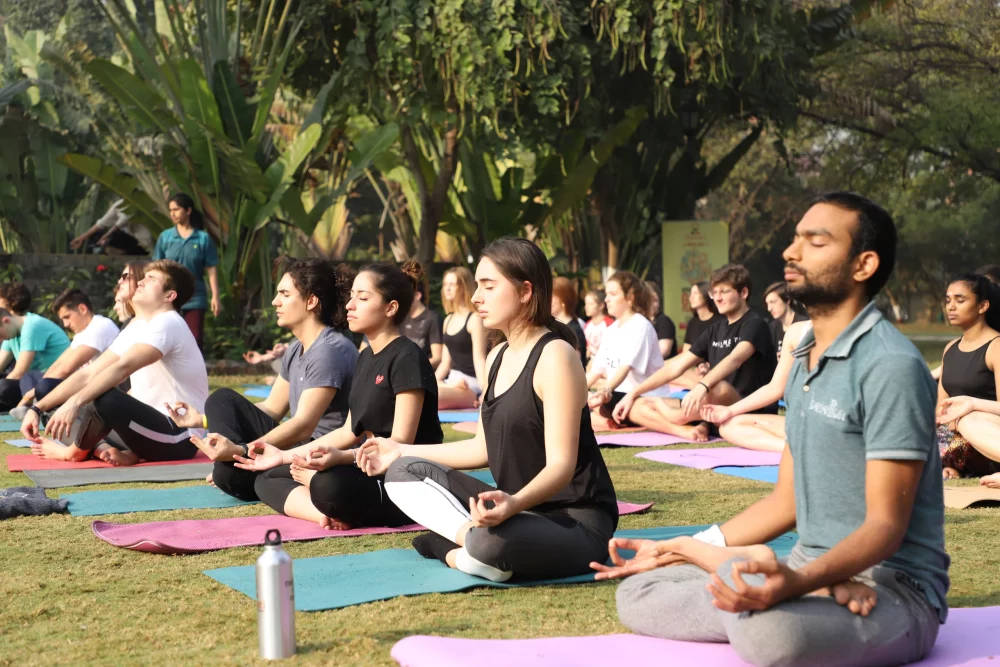Arti Dhamale
Yoga Instructor and Fitness enthusiast
artidhamale@gmail.com
“There is nothing training cannot do. Nothing is about its reach. It can turn bad morels to food; it can destroy bad principles and recreate good ones; it can lift men to ANGELSHIP.”
-Mark Twain
While reading one of the best sellers, motivational book, my eyes ran through this inspiring quote. This immediately took me to the yoga philosophies and our old texts which explains way of living. The same is beautifully portrayed in paths of Yoga which takes some resemblance from Bhagwat Gita (Page 83). The Jnana yoga, also known as the treacherous path (shows the path for self-realization). Jnana Yoga is typically characteristic of the non-dualistic (Advait) Vedanta. Here we learn to discriminate self from non-self (ego, body, mind and intellect) to find the real self.
As Maharshi Patanjali said: YOGAH CHITTA VRUTTI NIRODHA
Its only mixed modification which lead to miseries as well as our happiness. So, at the last we have our mind to make modification to reach our life goals.
Jnana yoga provides ways to reach our goals by following
SadhanaChtushtaya (how to learn Veda) which explains:
1. Vivek (Nityanityavastuvivek) i.e. the knowledge which helps us to make Discrimination between real and unreal. It’s being able to identify what is changing and what is non-changing; what is short-term and what are long-term benefits in life.
2. Viaragya (non- attachment) i.e. we should attain non-attachment towards the fruit of our deeds which eventually leads us to release the feelings: Sukhanishayi raga, dukhanushayiDvesh (The things which makes us happy we get attached to it and the ones which gives us pain we hate that)
3. Shat Sampat (SamaadiShaktasampathi) – in ancient time it’s said that strength of character is very essential. The Shat Sampat are the six virtues that contribute towards one’s greatness in character – hence termed as wealth.
a. Shama(Calmness) –To sharpen the intellect, you first need to calm the mind. Without peace your mind become dull and you don’t understand anything happening around you. Suppose you see someone doing wrong and you get angry instead keep yourself calm and educate the other person about their mistake. And if they are not willing to understand, then ignore and move on.This ability to keep a calm mind under any kind of circumstances with sense of detachment is Kshama.
b. Dama(self-control) – turning Jnanaindirya and karma indriya away from Vishay i.e. self-control over your senses. For example, you want to study but your mind says to watch movie and you watch movie, in spite of knowing that you should study.
To have Dama means to have a perfect alignment between your mind and your senses.
c. Uparati(detachment) – Means Enjoying everything that you do, even if its small. It means to have enthusiasm in whatever you do. One who does not have enthusiasm cannot create or invent anything new. Uparati means to do everything wholeheartedly, finding joy and taking total interest in it.
d. Titiksha(Patience) – Titiksha means forbearance. This helps us to live in any situation and surrounding. Nothing hampers our individuality. You Stand firm in front of people and unpleasant or negative people are not able to pull you down. U remain unaffected and focused on your goal.To maintain a balance and be able to bear it when undesired situations arise in life – that is a sign of having Titiksha.
e. Sharadha(faith) -Shraddha means to adore something that you don’t completely know. Eg. Faith on guru or faith on Doctor.You do not need to have faith in what you already know. Faith is always in something that you do not know, yet you feel a sense of connectivity to that unknown.
Putting a foot forward before you get the fruit of the action is called Shraddha.
f. Samadhan(content) – Samadhana means contentment. A person who content exuberates a certain sense of joy from deep within.
Contentment is not lethargy. Do not confuse contentment with lethargy. Contentment is creativity, and creativity blossoms in us when there is Samadhana.
4. Mumukshatva- It is the desire to be free. Holding on tightly to the keys of the house and wanting to control everything is a sign of lack of Mumukshatva, and knowledge cannot dawn in such a state.Accept the things as they are, you live your life and let others live. Do not control anybody or anything. Let Life flow and let everybody enjoy it, learn from it and cherish it.
So, coming back to our Start point, whatever we can think of, imagine of, we can achieve with persistence, determination and focus.
This is poetically demonstrated by the great poet Vrunda:
“Karat Karatabhyas k jadmati hot sujan,Rassiaawatjatte, sil par paratnisan.”
Same is written by Paatanjali in Yoga Sutra:
TatraSthitiyatnoabhyasahAbhyaseVishamVidya.
To walk in any situation and doing continuously is “Abhyas” and can lead to achieve your goal, as the persistent rubbing of rope also makes mark on the stone.
Bhagwat Gita has defined how to study Vedanta under Guru’s guidance in 3 stages:
1. Shravana (Listening)
2. Manan (Reflection)
3. Nidhidhyasana (Continuously repeat the process)
Weather it’s India or any other country, the only way to master any field is that you need to work on the factor which finally leads to Liberation. Liberation from everything, the emotional or physical attachment to all the worldly thoughts. It takes efforts and time to get what you want and for that you should follow Shravana, MananaNidhidhyasana.
It might not always look like that our all efforts are that effective but still keep going and have trust they are!
And once they reveal your success, every dot will be connected, and everything will make sense.
KEEP GOING!!!


